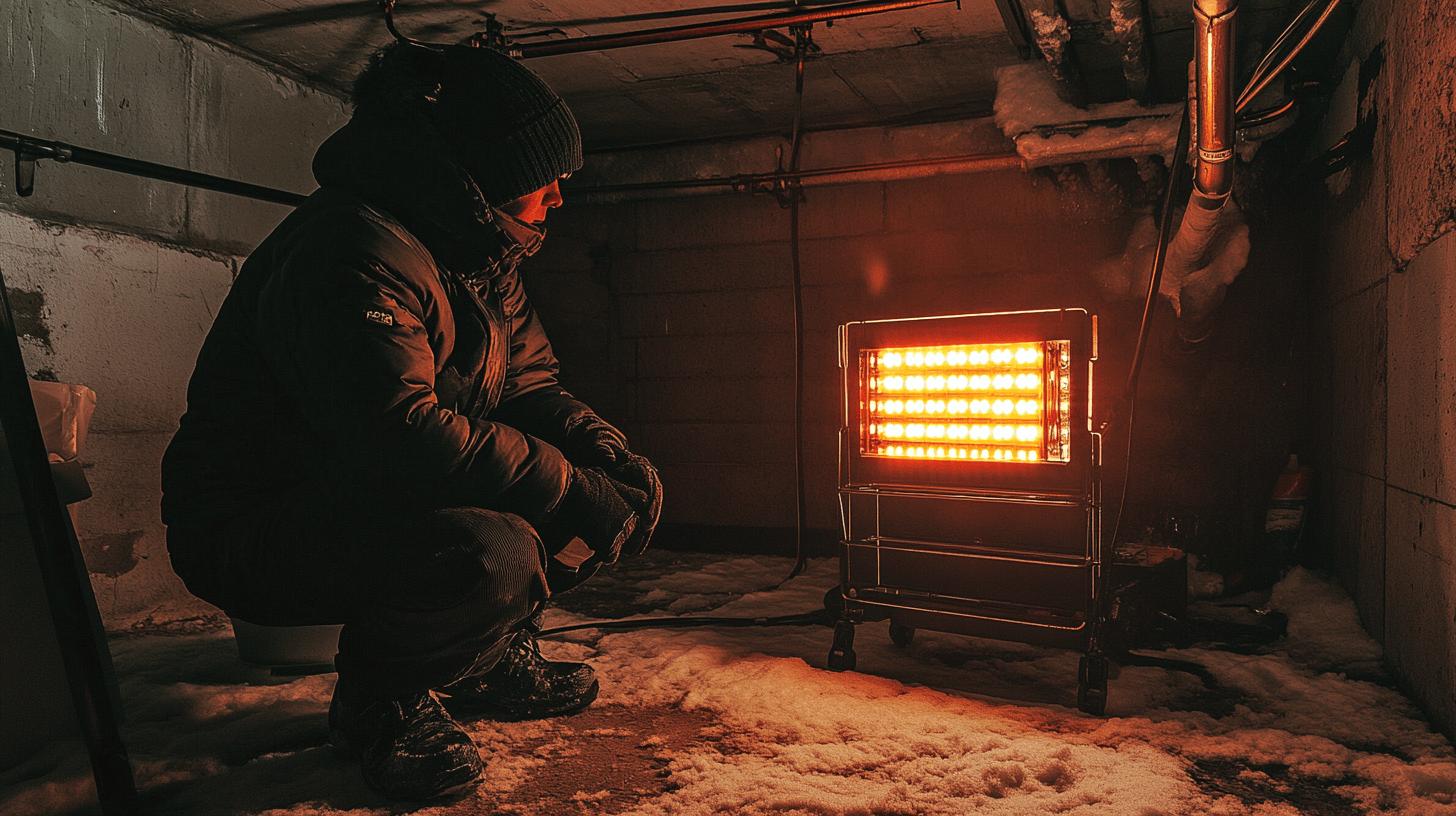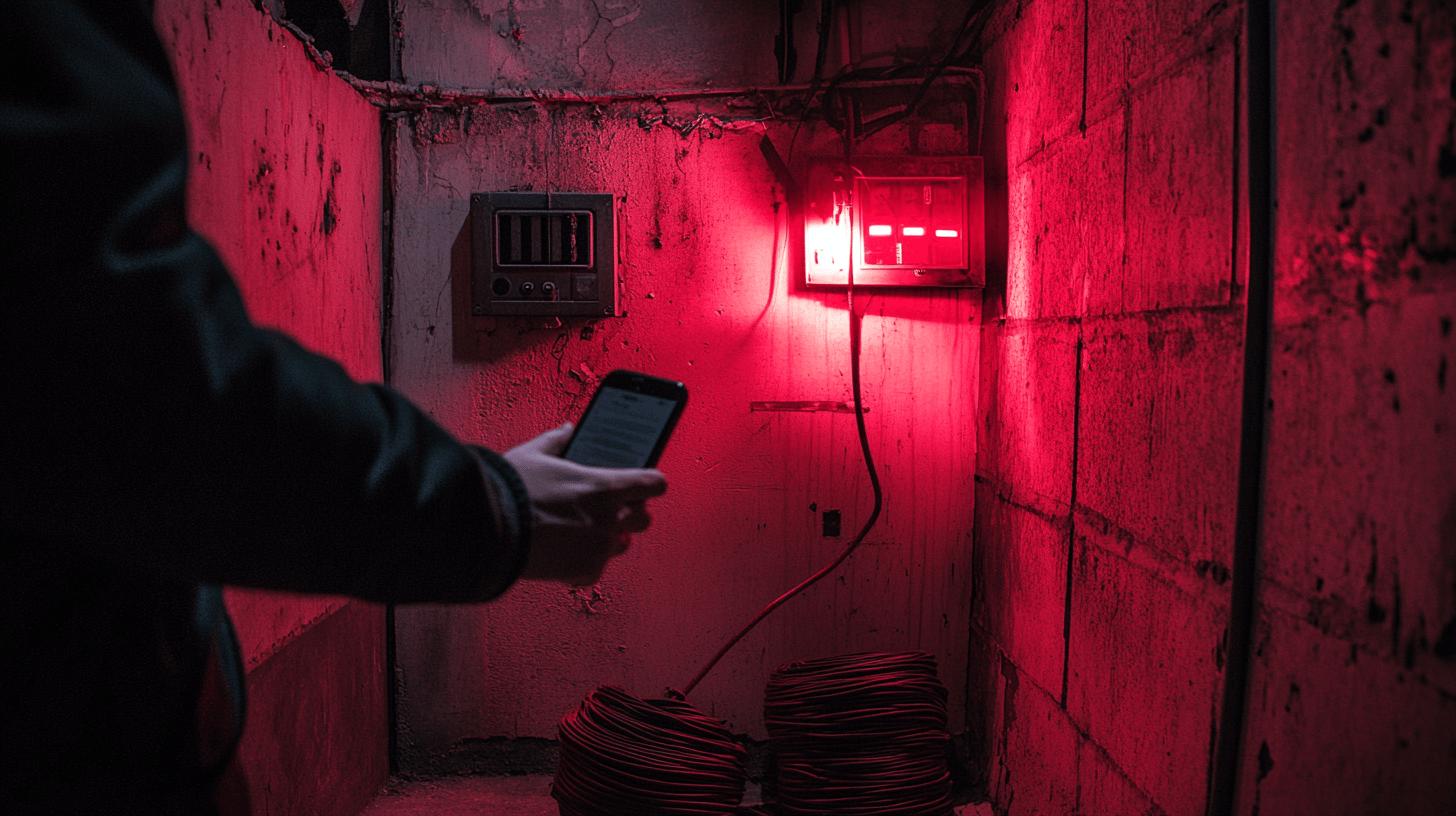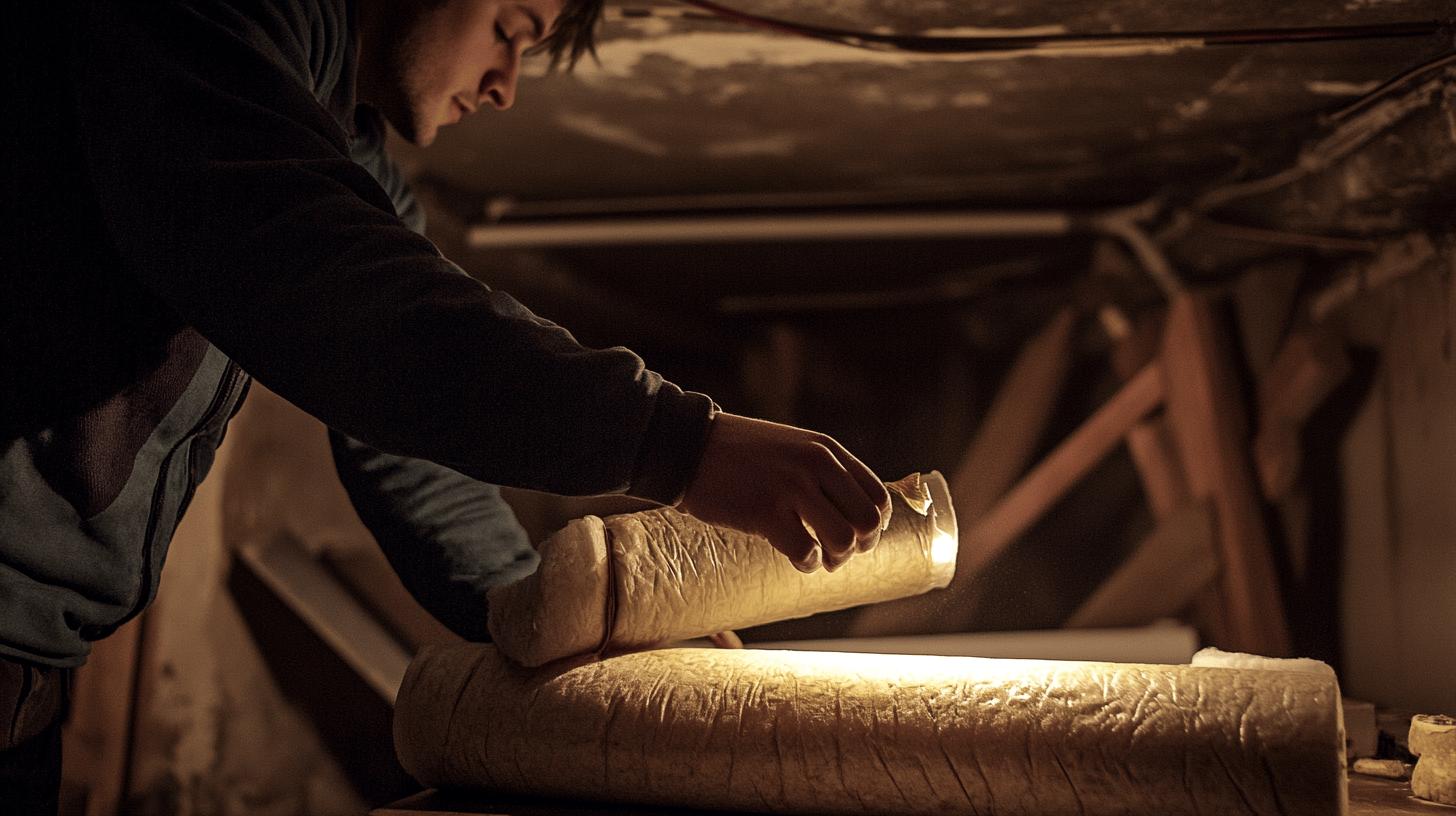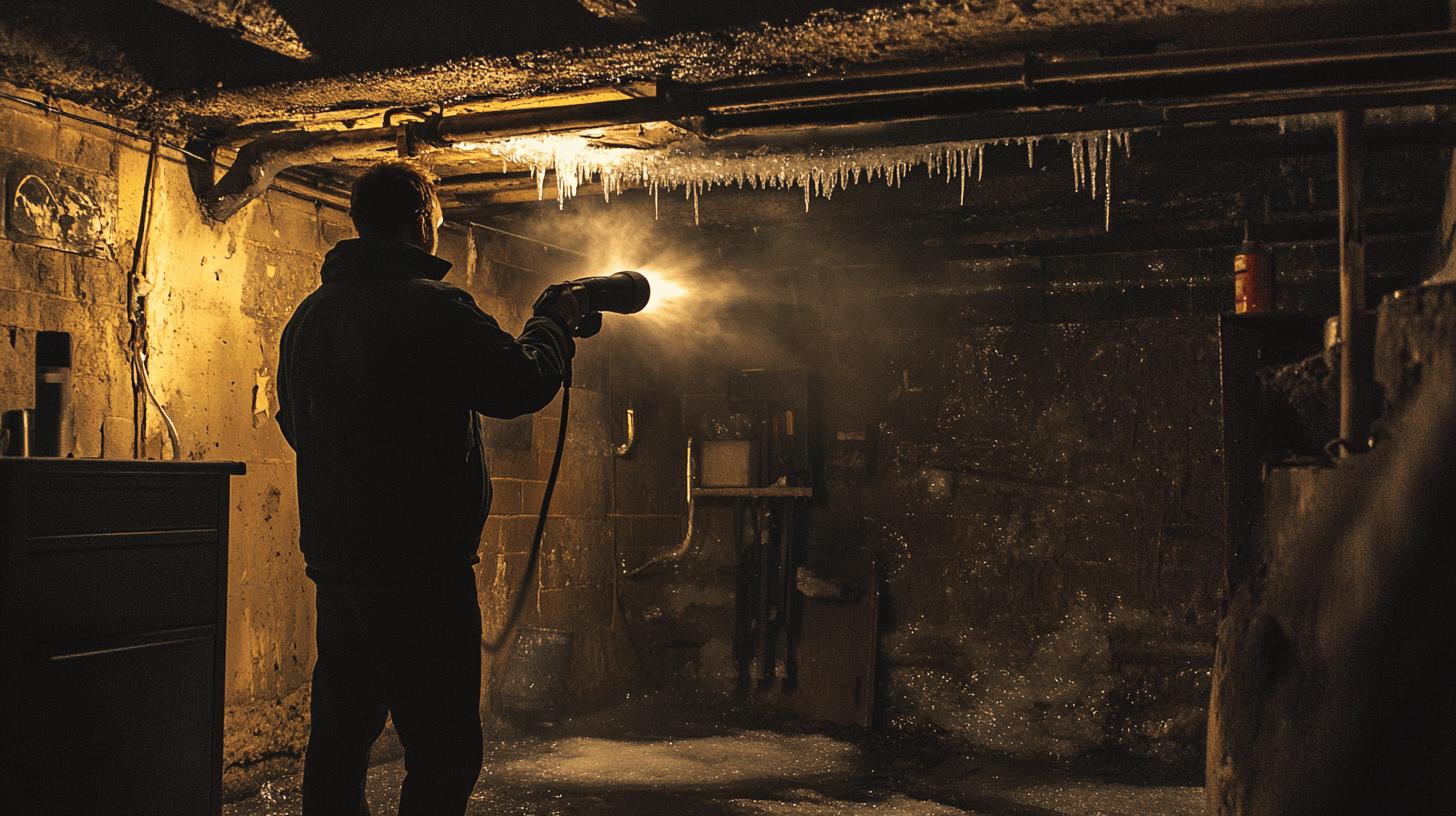TL;DR:
- Frozen pipes occur when water inside pipes freezes, typically below 20°F, especially in uninsulated areas.
- Signs include reduced water flow, frost on pipes, clanking noises, and visible damage.
- To thaw frozen pipes, turn off the main water supply and apply heat using tools like hair dryers or space heaters.
- Monitor for leaks and contact a plumber if damage is found.
- For hard-to-reach pipes, use infrared lamps or call a professional.
- Prevent frozen pipes by insulating exposed pipes, maintaining consistent temperatures, and sealing cracks.
- Keep emergency plumber contact info accessible, especially in winter.
Is it really worth the risk of flooding your home just to save some time? Frozen pipes are like a ticking time bomb for homeowners, causing stress and possible damage. The good news is there are safe and effective ways to thaw frozen pipes before things go wrong. In this article, you’ll find out why pipes freeze, where it usually happens, and how to spot the warning signs. Let’s jump into some practical steps to handle frozen pipe issues and keep your home safe and dry!
Understanding Frozen Pipes and Their Causes
Frozen pipes happen when the water inside them freezes, causing the pipes to expand and increasing pressure. This usually happens in unheated areas like basements, attics, and exterior walls. If these places don’t have insulation and the temperature drops, the water in the pipes can freeze, which can lead to bursts and leaks.
Common signs of frozen pipes include:
- Little or no water flow when faucets are on
- Frost on the outside of pipes
- Clanking or banging noises when water runs
- Unusual odors from drains
- Visible cracks or bulges in the pipes
Pipes usually freeze when temperatures drop below 20°F, especially if they aren’t insulated. Insulation works as a barrier, keeping cold air away from the pipes and helping maintain a steady temperature inside. Taking these steps can prevent freezing and save you from expensive plumbing repairs.
Safety Precautions Before Thawing Frozen Pipes

Before thawing frozen pipes, make sure to find and turn off the main water shutoff valve. This helps prevent flooding if the pipe bursts or leaks while you’re thawing it. Shutting off the water reduces the risk of serious water damage.
Safe tools for thawing pipes include:
- Hair dryer
- Heat lamp
- Portable space heater
- Electric heating tape
Keep a close watch while thawing the pipe. Look for any leaks or bursts as the pipe warms up, since freezing can cause damage. Monitoring the process helps you catch any issues quickly so you can fix them right away.
Step-by-Step Guide to Thawing Frozen Pipes
Follow these steps to safely and effectively thaw frozen pipes.
- Identify the Frozen Pipe: Open all faucets and check water flow. Trace the plumbing lines from the faucets with little or no flow to find the frozen section.
- Shut Off Water to the House: Turn the main water supply valve clockwise to “off.” This prevents flooding if the pipe cracks or bursts during thawing.
- Apply Heat to the Frozen Area: Use a hair dryer, heat lamp, or heating pad. Start from the faucet end and move toward the frozen section. This allows melting ice to escape through the open faucet, reducing pressure buildup.
- Check for Leaks: Once the pipe starts to thaw, partially turn on the main water supply. Inspect the pipe for leaks. If you find any, turn off the water supply and contact a professional plumber.
If you spot any leaks while thawing the pipe, act fast. Turn off the water and call a plumber to check and fix the damage. Trying to repair leaks without the right know-how can make things worse. Plumbers have the tools and skills to handle these situations safely.
Thawing Frozen Pipes in Hard-to-Reach Areas

Thawing pipes behind walls can be tricky. Start by raising the room’s temperature. You can also use infrared lamps to warm up the area. These methods thaw the pipes slowly without damaging your walls or plumbing.
Tools for thawing hard-to-reach pipes include:
- Electrical heating tape
- Infrared lamps
- Portable space heaters
For underground pipes, you might need specialized equipment like pipe thawing machines. These machines use an electric current to slowly warm the pipe. If you don’t have one, call a professional plumber who does. They can thaw the pipes safely and efficiently.
Keep a close eye on the area while thawing. As the ice melts, any existing damage might show up. Watch for water seeping through walls or floors. If you notice any problems, turn off the water and call a plumber. Monitoring the process helps prevent more damage and expensive repairs.
When to Call a Professional Plumber for Frozen Pipe Thawing
Knowing when to call a professional plumber is key. If you can’t find the frozen section or the pipe is damaged, call a plumber right away. Trying to thaw it yourself could cause the pipe to burst and lead to serious water damage.
Benefits of hiring a professional:
- They have specialized equipment.
- They ensure safe thawing without causing more damage.
- They provide quick solutions, minimizing inconvenience.
Keep emergency contact info for local plumbing services handy, especially during winter months.
Preventing Frozen Pipes in the Future

Insulating pipes and keeping steady temperatures are important for prevention. Pipes in unheated areas are more likely to freeze. Using foam insulation or heat tape helps protect them by keeping the internal temperature stable.
Preventative measures include:
- Insulate exposed pipes with foam or heat tape.
- Maintain a steady thermostat, even when away.
- Let faucets drip during extremely cold weather.
- Seal cracks in walls, floors, and around windows.
Letting faucets drip keeps the water moving, which lowers the chance of freezing. Even a slow drip can stop pressure from building up and causing bursts.
Sealing cracks in walls and windows helps keep cold air out, preventing pipes from getting too cold. Use caulk or weather stripping to close these gaps, which not only protects your pipes but also makes your home more energy efficient.
Final Words
Understanding what causes frozen pipes and knowing the signs can save you both time and money. It’s important to take safety precautions before you start thawing to avoid any complications.
The step-by-step guide and methods for reaching tough areas give you practical solutions for thawing frozen pipes. Knowing when to call a professional ensures you can tackle serious issues effectively.
To prevent frozen pipes in the future, focus on proper insulation, maintaining consistent temperatures, and other proactive measures for peace of mind as a homeowner.
By following these tips, you can confidently handle frozen pipe thawing and keep your plumbing system in great shape.
FAQ
How long does it take for frozen pipes to thaw?
Thawing a frozen pipe typically takes several hours, but the exact time varies based on factors like pipe material, ambient temperature, and method used.
Will frozen pipes thaw on their own?
Yes, frozen pipes can thaw on their own. It could take days for this to happen, especially if temperatures stay low.
What is the best way to thaw a frozen drain pipe?
The best way to thaw a frozen drain pipe is using a hair dryer, heat lamp, or space heater. Avoid open flame devices to prevent damaging the pipe.
Will frozen pipes burst when thawed?
Frozen pipes can burst when thawed due to pressure. Thaw pipes slowly and carefully to minimize this risk and check for leaks during the process.
What temperature do pipes freeze?
Pipes typically freeze at temperatures below 20°F, especially if they are not insulated or located in unheated areas.
How long for pipes to thaw naturally?
Pipes can take a few hours to a couple of days to thaw naturally, depending on environmental conditions and pipe material.
Pipes frozen for 2 days—What should I do?
If pipes are frozen for 2 days, begin by shutting off the main water valve and use safe thawing methods like a hair dryer or space heater. Monitor closely for leaks.
Is using a pipe thawing machine effective?
Pipe thawing machines are effective and often used by professionals. These machines send an electric current through the pipe to generate heat and thaw frozen sections.
How to unfreeze air conditioner (AC) pipes?
To unfreeze AC pipes, first turn off the AC unit. Allow the ice to melt naturally or use a hair dryer on a low setting. Ensure proper airflow and check for any mechanical issues.

